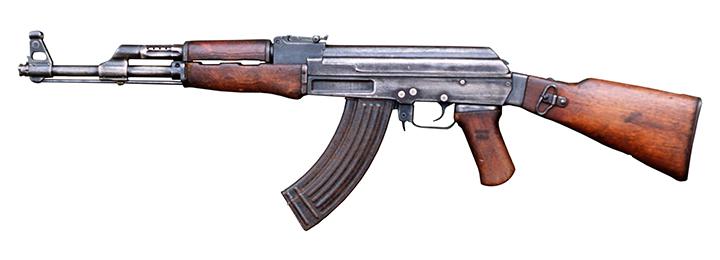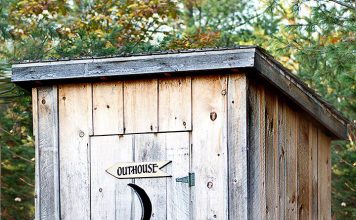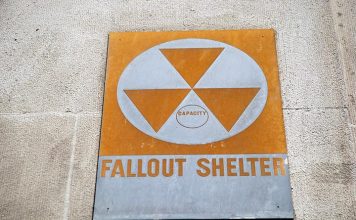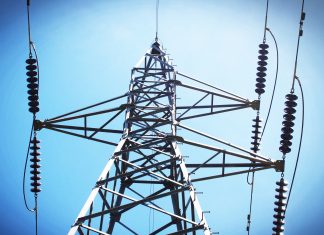| Issue #47 • September/October, 1997 |
Like many another rural person, I’ve often found a firearm to be my most important tool. No, we don’t have much crime in our area; in fact during all of the years we’ve lived here, I’ve never once needed to point a gun at a person. We are, however, pretty regularly plagued with starving feral dogs. If you think armed urban criminals are dangerous, you should see these dogs. You don’t ever want to end up facing a pack of such hunger-crazed canines without a reliable, no frills, no nonsense firearm in your hands.
Our family has also enjoyed many fine meals of roast venison, fried squirrel, wild goose, and the like, all brought to the table with the aid of a firearm. And in most years an accurate rifle has meant all the difference between enjoying garden picked tomatoes, melons, and sweet corn or just watching the raccoons, opossums, and groundhogs fatten up.

The AK-47 semi-automatic rifle |
Again, though, like a whole lot of other folks in similar circumstances, I’ve never felt much desire to invest a bunch of money in fine expensive firearms, opting instead for solid, reliable, working tools. This is why I so strongly recommend surplus military rifles for backwoods uses. They’ve been designed and built to stand up to a lot of hard use and knocking around. Sure, most really aren’t much to look at (especially most of these Russian guns), but they’ll get the job done with a minimum of fuss and bother.
With few exceptions, just about any style of ex-military rifle for which ammunition is still available can prove ideal for uses such as mine. In this article I’m only going to cover a few of Russia’s surplus rifles, in part because they seem so ideally suited to reliable backwoods uses, but mostly because, on a dollar for dollar basis, they represent some of the very finest firearms values available today.
Before I continue, I probably need to get the most familiar of all the Com-block rifles out of the way. Though your own tastes, preferences, and wallet may differ considerably from my own, the AK-47 isn’t a gun that I’d want to recommend for real rural uses. It may be a defensive arm par excellence, but as a hunting, farmstead, or go-anywhere-do-anything rifle, the AK style rifle simply doesn’t make the gradeneither in accuracy, handiness (try comfortably firing one of these rifles from prone with their big magazine hitting the ground), nor price.
The SKS rifle
The SKS rifle, however, is an entirely different animal. Though many imports of this gun are of Chinese manufacture, it was originally a Russian design. It is often available for around a hundred bucks, in new or as-new condition. This handy little semi-auto is just the ticket for taking whitetails in the woods or groundhogs in the bean fieldout to somewhat over 200 yards. While its 7.62 X 39 cartridge packs plenty of punch for the bigger bucks (especially with handloaded 150-grain bullets), its recoil is really pretty negligible. The only real complaint I’ve encountered with this gun is that its stock is a trifle short for many American riflemen. So, while it is really unnecessary from a recoil standpoint, you may find that you want to install a recoil pad simply to lengthen the stock.

The SKS semi-automatic rifle |
There also seems to be a plentiful supply of inexpensive surplus ammunition available for these rifles, as they fire the same cartridge as the more familiar AK-47. Most of this ammo, however, is Berdan primed (not readily reloadable), and much of it uses corrosive powder (requiring diligent gun cleaning procedures). Also, much of it is full-metal-jacketed (FMJ), which can create a ricochet hazard in populated areas. For target practice, plinking, and varmint shooting, however, even the FMJ ammo is a terrific deal. Lately, though, I’ve been noticing a lot of Russian-manufactured hollow-point ammo on the market. Having tried some of this sort of ammo myself, I can tell you that this seems like just the stuff for animals ranging from varmint-size on up to medium-sized game.
While I have seen several shooters who’ve opted to add a telescopic sight to their SKS, given the rifles extreme handiness at close to moderate ranges, I’d personally find this more of a hindrance than an aid. For varmint hunting, however, I do sort of like the folding bipod you’ll sometimes find available. It fits on the rifle as a replacement for the bayonet.
All told, for woods hunting, dealing with feral dogs, and similar uses, you really can’t go wrong when selecting an SKS type rifle as your backwoods firearm.
Mosin-Nagent rifles
When you start considering more open country, with ranges stretching out as long as 500 yards or more, then Russia’s Mosin-Nagent rifle may be more what you are looking for. Firing a 7.62 X 54 rimmed cartridge, which in both appearance and power falls in between our standard .308 round and the old .303 rimmed British round, this sweet-shooting, five-shot bolt-action rifle can be tremendously effective on anything from groundhogs and rock-chucks up to elk, moose, and grizzly bear at pretty extended ranges. Regularly available at gun shows and military surplus stores, as well many gun shops, for under $200, this represents one of the best firearms deals around.

The Mosin-Nagent bolt-action rifle |
Aside from the regular Russian military contractors, you’ll encounter fairly large numbers of these rifles that were built by Sako in Finland and by Remington (and even Westinghouse) in the U.S. You do need to exercise a little caution and judgment when considering purchasing one of these, however, as they seem to turn up in every possible condition, from perfectly new and unissued to utterly worn-out and unsafe.
Though mounting a scope on this rifle is a somewhat awkward task, it’s well worth the effort, given the exceptional long-range accuracy potential.
While generally corrosive and FMJ, surplus ammunition is also plentiful for these rifles. Most of what you’ll find will be Berdan-primed. Occasionally, U.S.-manufactured Boxer-primed (reloadable), surplus ammo crops up at gun shows, etc. This Boxer-primed ammunition is well worth watching for.An interesting historical note concerning this Mosin-Nagent rifle includes the fact that this was the gun found in the hands of the soldiers on both sides during the Russo-Finnish war. This would seem a pretty strong testimony to the high regard in which these northern warriors held this accurate, battle-proven, dependable bolt action rifle.
Tokarev semi-auto rifles
Last I’ll cover what may well be the best Russian rifle of all for reliable backcountry use. Produced in three major models’38, ’40, and ’41the Tokarev semi-auto rifle seems to represent the best possible compromise of the SKS carbine and Mosin-Nagent rifle.
Using a 10-round, detachable magazine and firing the same heavier 7.62 X 54mm round as the Mosin-Nagent, this Tokarev rifle offers both the extra power and range of Russia’s bolt-action military gun along with the quick semi-auto rate of fire of the SKS carbine.

The Tokarev semi-automatic rifle |
Though the cost is generally almost double what you’d expect to pay for either the Mosin-Nagent or SKS, it’s still usually less than half the price asked for one of our own retired M-1 Garand rifles. The Tokarev is also one tough gun, built to stand up not only to absolutely raw recruits but to every conceivable weather and climate extreme as well.
Actually, this Tokarev gun was pretty well the Russian version of the Ml-Garand, and probably any World War II vet can readily tell you what a terrific rifle our Garand was.
While it is perfectly suited for quick, close range shooting and moving whitetail, it is also readily usable for long distance calling on western big-game. It is handy enough for defensive uses, whether you’d need to worry about two- or four-legged predators, but still hefty enough to settle down nicely for long range shooting. The Tokarev is a nice, useful, and usable rifle in a plain package for a plain price.
Mounting a scope on this gun is actually somewhat simpler than it is with the Mosin-Nagent. But unless you already have plenty of experience at this sort of work, it’s a job for a competent gunsmith. It’s also worth pointing out that all three of these rifles (and the .303 British as well), shoot the same .311 diameter bullets, which makes any of these rounds into a handloader’s dream.
While I’ve already mentioned that the 7.62 X 39mm SKS cartridge can handle 150-grain bullets (which seem to perform ideally on woods-running whitetail), handloaders need also remember that the lighter 120-125 grain bullets, generally employed in the 39mm length case, can provide exceptionally flat-shooting, long-range projectiles for taking smaller deer, antelope, predators, and varmints when loaded atop the higher capacity 54mm case.
For those who relish grilled venison chops and similar fare, along with our homegrown sweet corn and other veggies, these retired Russian rifles can yield a whole lot more bang for our backwoods buck.
Should you find that you are interested in obtaining one of these rifles, but have any problem locating them in your area, the following addresses should prove helpful:
Interstate Arms Corp.
East of the Mississippi River 6-G Dunham Rd., Billerica, MA 01821
West of the Mississippi River 18518 Parthenia St., Northridge CA 91324
Classic Arms P.O. Box 125, Indian Trail, NC 28079
Springfield Sporters Inc. R.D. #1, Penn Run, PA 15765
SAMCO Global Arms Inc. P.O. Box 7323, Miami, FL 33152
Eagle Exim Inc. 708 Blossom Hill Rd., Suite 196, Los Gatos, CA 95032














